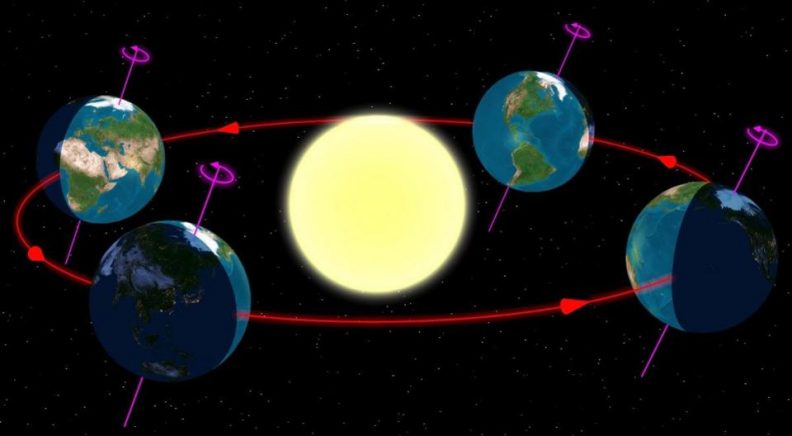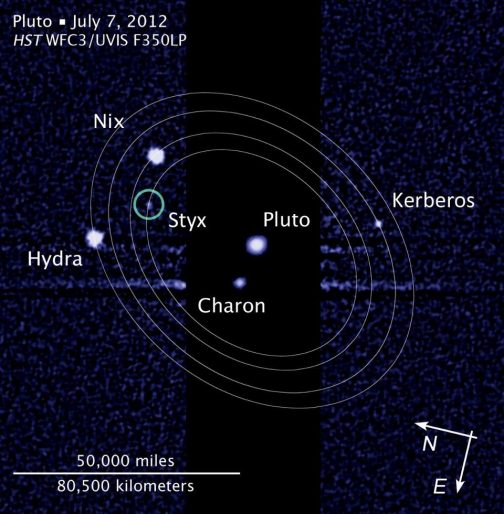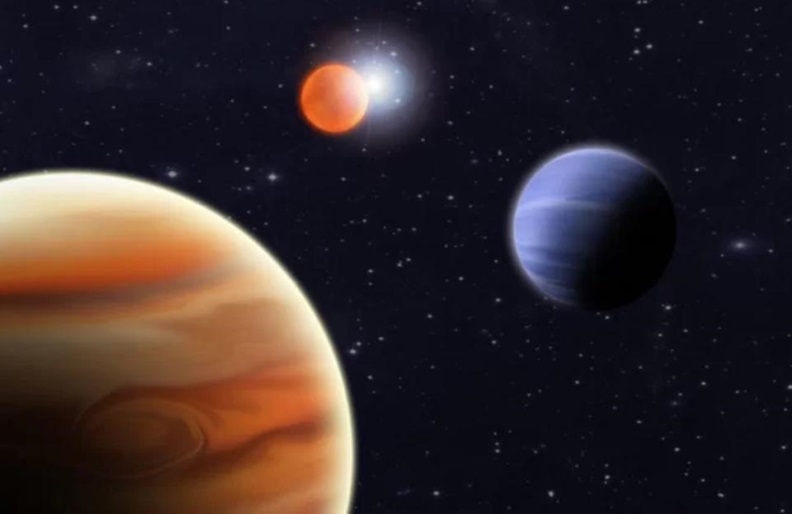‘Game Of Thrones’ Home World Could Actually Exist, Says Science
Winter is coming. Here on Earth, we can accurately predict when it will arrive, how long it will last, and even — to a large extent — how severe it will be. But that isn’t the case for the continents of Westeros and Essos in George R.R. Martin’s epic series and television show. Imagine living on a world where the seasons were unpredictable: their onset, duration, and severity would be completely unknown. You may go months, years, or decades between winters, and the winters themselves may be mild, severe, or catastrophic, potentially lasting for years themselves. While Earth itself will never experience this type of seasonal chaos, Pluto’s outer moons do, as NASA’s New Horizons showed us. Equipped with our new understanding of planetary systems, we can scientifically show that the irregular winters in A Song Of Ice And Fire aren’t just fantasy after all, and that the world of Westeros must be a moon orbiting a giant double planet.

Double planets, in theory, can come in a wide variety of sizes and orbital ranges. Any smaller worlds orbiting both of them, at a greater distance, would keep a steady, stable orbit, but would rotate and tumble chaotically.
It might seem like the laws of physics themselves are against you. Planets rotate on their axis, revolve around their parent stars in ellipses, and any changes that occur to their orbits are either extremely gradual or are immediately catastrophic. Unless there’s a collision or a major, nearby gravitational interaction, the only changes you’ll see are due to the precession of your planetary orbit and equinoxes, the gradual slowing of your rotation, and the motion of your planet around the Sun. The season are determined by a combination of your axial tilt and your distance from the Sun, and that’s it.

The Earth in orbit around the Sun, with its rotational axis shown. All worlds in our solar system have seasons determined by either their axial tilt, the ellipticity of their orbits, or a combination of both.
You might think of a number of configurations that could solve this, as many have done. But each one has a fatal drawback for describing the world containing Westeros, such as:
- Having the planet orbit a binary star system, transferring between the two stars. This solution is dynamically unstable, and would eject the planet into interstellar space.
- Have a swarm of large planets passing by, chaotically changing the orbit of your world. The drawback is that such gravitational encounters, if significant enough to alter your orbit, are more likely to make your world uninhabitable due to orbit changes.
- Have an orbit-switching world close by, like Saturn’s moons Janus and Epimetheus. This would only present two stable possibilities in a regular fashion, not the chaotic, unpredictable winters like those experienced in Game of Thrones.

This image, taken by NASA’s Hubble Space Telescope, shows all five moons of Pluto in orbit around this dwarf planet. The orbital paths are added by hand, but occur in a 1:3:4:5:6 resonance, and all orbit in the same plane to within one degree. The outer four moons, beyond Charon, all tumble instead of rotating on a consistent axis.
But there is an option that will work, inspired by our own Solar System. In the outer reaches, out beyond Neptune, the Pluto-Charon system provides the clue that we need. Pluto and Charon are locked to one another, but just barely outside of them are four other moons: Styx, Nix, Kerberos, and Hydra. If Pluto and Charon had merged into a single mass, all four of these moons would be tidally locked, where the same side always faces towards the parent world. But replacing that single world with a double world, where both objects are of a comparable and much larger mass than the outer moons, means they’ll tumble, chaotically, instead.
In order to build the world of Westeros, we just need to scale it up. Instead of having a small asteroid-sized object orbiting a binary dwarf planet, we could have an Earth-sized world orbiting a twin gas giant. If you had, say, a Saturn-sized planet with a super-Earth orbiting it close by, or a massive gas giant orbited by the rocky core of Jupiter, any moons of those binary worlds — even Earth-sized moons — would have that same chaotic, tumbling behavior. Night and day will still be a reality on a world like this, as the Earth-sized moon would still rotate rapidly with respect to the Sun, but the rotational axis would be wildly unpredictable. This would cause large variations in both the onset of seasons and in the length of night/day, potentially even leading to months or years of darkness on end for part of the world.

A planetary collision in the early stages of forming a solar system could be a way to create a double planet, even potentially a pair of giant worlds. Any moons beyond them both would orbit rapidly, but would also tumble due to their mutual gravitational effects.
There are a number of ways such a tight, massive, binary planet could be created, but the easiest way would be a massive collision between two young gas giants in the first 100 million years of a solar system’s formation. With the right orbital parameters, a large gas giant with a slightly smaller, massive companion planet — still many times the mass of Earth — could be formed. Both the gas giant and its massive companion would be tidally locked to one another, allowing the outer moons to stably orbit with an irregular axis of rotation. On a world like one of these moons, an orbit around the giant doublet might only take 24 hours (like Saturn’s moon Mimas), but the changing axis of rotation ensures that the season will be wildly unpredictable.

From the surface of a world orbiting a giant binary planet, two worlds, one potentially larger than the other, would be visible for half the time, on average. At night, they’d be far and away the most prominent features in the sky.
Wherever you live on this world, you can be sure that winter will come eventually. There may even be regions, like the North, that will be stably colder than the rest of a continent for tens of thousands of years. But how long a winter lasts, when it arrives, and how severe that winter will be isn’t governed by magic, but rather by the gravitational pull of the Sun and the double planets that your world orbits. The dead giveaway will be the two giant planets taking up so much real estate in your skies. And it’s more than just winters. Thanks to just a little bit of innovative physics, we can recreate a planetary system that gives us the long, seemingly endless summers that every house in Westeros dreams of.
This article was originally published by Forbes. Read the original article.

